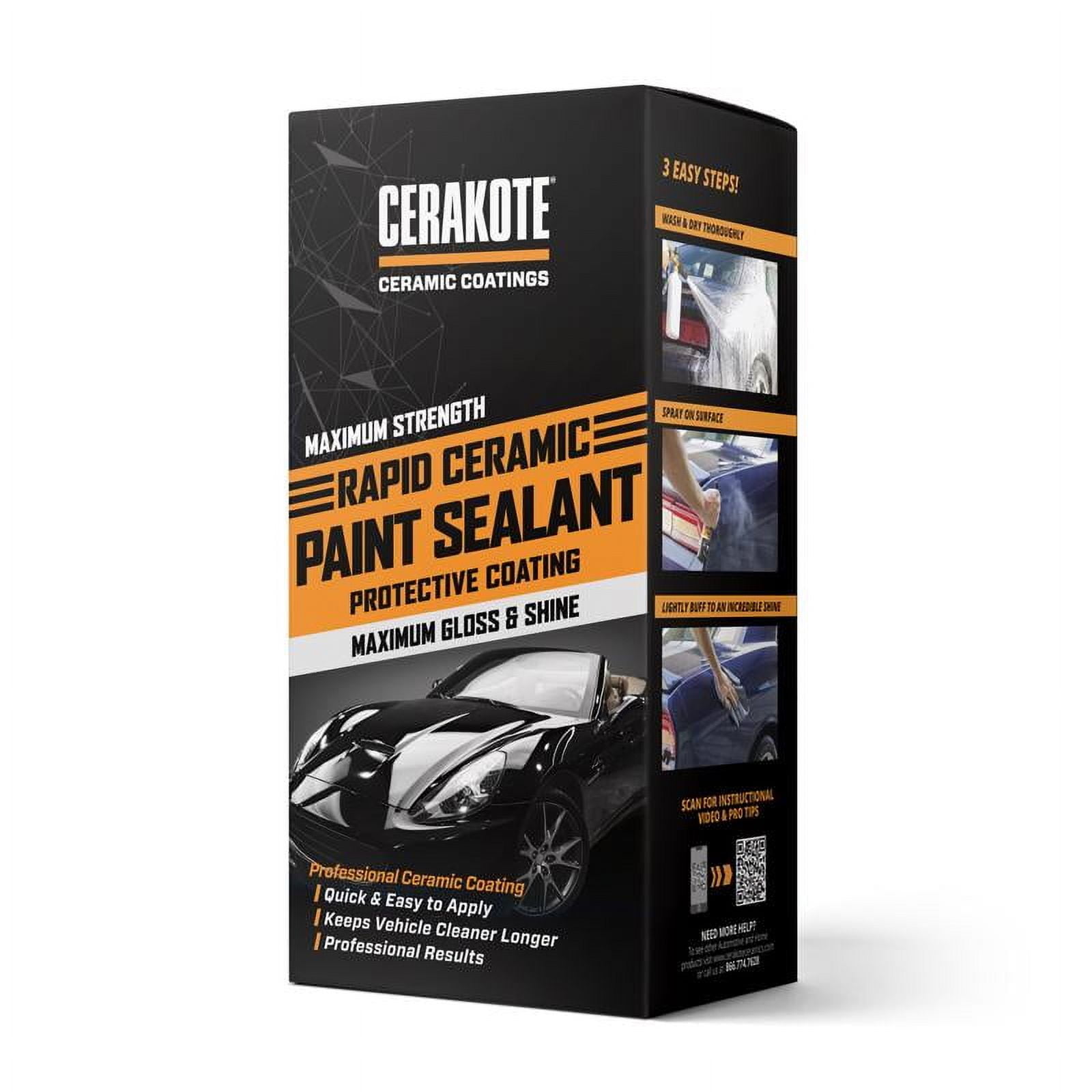Why Ceramic Covering Is the Ultimate Service for a Perfect Complete
Ceramic finishing has emerged as a leading service for those looking for a remarkable surface for their vehicles, many thanks to its exceptional resilience and safety functions. What aspects truly set ceramic covering apart?
What Is Ceramic Layer?

When used correctly, ceramic layer creates a hydrophobic surface that repels water and dirt, making it less complicated to clean and preserve. Unlike traditional waxes or sealants, which commonly provide short-lived security, ceramic coatings can last for numerous years, depending on the product high quality and application approach. The process of applying ceramic finish calls for meticulous prep work, consisting of extensive cleansing and sometimes paint improvement, to make certain optimal bonding and efficiency.
Ceramic finishes are not restricted to automotive surfaces; they can also be used on different materials, including glass, metal, and plastics, offering a flexible option for boosting defense. Overall, ceramic covering represents a considerable improvement in surface security innovation, integrating both functional and aesthetic benefits for a wide variety of applications.
Advantages of Ceramic Finish
While lots of surface area protection alternatives exist, the advantages of ceramic finish attract attention as a result of its one-of-a-kind properties and long-lasting efficiency. Among the primary benefits is its exceptional longevity. Ceramic Coating Philadelphia. Unlike standard wax or sealants that need regular reapplication, ceramic layers give a resistant layer that can last for a number of years, substantially decreasing maintenance efforts
An additional significant advantage is improved protection versus environmental contaminants. Ceramic layers develop a hydrophobic surface that repels water, dust, and different pollutants, making it less complicated to clean up. This feature not just protects the vehicle's look however also reduces the risk of corrosion and oxidation, especially in severe climate condition.
Furthermore, ceramic layers use exceptional resistance to UV rays, protecting against fading and deterioration of paint over time. This UV security is essential for keeping the aesthetic worth of vehicles and surface areas revealed to direct sunshine.
In addition, the shiny coating attained with ceramic coating improves the total visual appeal, providing surface areas a showroom-quality luster. In general, ceramic coverings stand for a considerable innovation in surface security technology, offering long-lasting advantages that accommodate both practical and visual demands.
How It Works
Recognizing the science behind ceramic coverings exposes just how they give such amazing security and durability. At its core, a ceramic layer is a liquid polymer that chemically bonds with the car's factory paint. This bonding produces a safety layer that is both oleophobic and hydrophobic, repelling water, dust, and oil. The key component of most ceramic finishings is silicon dioxide (SiO2), which is acquired from quartz. This substance adds to the layer's solidity and resistance to scrapes, UV rays, and ecological pollutants.
The application procedure entails numerous actions, including surface area preparation, which is crucial to accomplishing optimal attachment. As soon as used, the finish undergoes a treating procedure, during which it hardens and creates a semi-permanent bond with the paint surface area. This bond is what differentiates ceramic finishes from traditional waxes and sealants, providing a longer-lasting safety barrier that can withstand for years.
In addition, the density of the layer can enhance its safety high qualities, guaranteeing that it can hold up against severe conditions. Inevitably, the science of ceramic coverings integrates sophisticated products with ingenious application methods to deliver an unmatched degree of defense and visual enhancement for vehicles.
Comparison With Standard Methods
When contrasted to standard paint protection approaches such as waxes and sealants,The advantages of ceramic layers end up being particularly evident. While waxes provide a temporary shine, commonly lasting a few weeks to a pair of months, ceramic coverings give a lasting safety layer that can endure for a number of years. This durability substantially reduces the frequency of reapplication, making ceramic layers a more economical solution over time.
Furthermore, typical methods commonly require considerable prep work and multiple applications to achieve an adequate degree of protection. In contrast, ceramic layers bond at a molecular degree with the vehicle's surface, producing a robust guard this hyperlink against environmental contaminants like UV rays, acid rain, and road salts. This bond improves the automobile's resistance to scrapes and swirl marks, which are widespread with traditional waxes and sealants.
Furthermore, the hydrophobic buildings of ceramic coatings fend off water and dust, leading to less complicated cleaning and upkeep. In contrast, wax and sealant-treated surfaces can bring in crud, necessitating more frequent cleaning - Ceramic Coating Philadelphia. Generally, ceramic layers not only provide exceptional protection but additionally supply an extra long-lasting and aesthetically attractive coating, developing them as the favored option for discerning car owners
Application and Maintenance Tips

Using a foam applicator, use the coating in tiny sections, complying with the supplier's guidelines pertaining to thickness and overlap. Allow sufficient healing time between coats, commonly 24 hr, to make certain appropriate bonding. After application, it is critical to avoid direct exposure to water or harsh aspects for at the very least a week to permit the covering to totally cure.
For maintenance, clean the vehicle on a regular basis with pH-balanced soaps and avoid rough products. Touchless auto washes are suggested to decrease scratching. Furthermore, utilizing a ceramic upkeep spray can boost the coating's hydrophobic properties and long life. Normal inspections for any indications of wear will certainly assist keep the finishing's stability and maintain that immaculate coating.
Verdict
To conclude, ceramic coating emerges as a premium alternative for attaining a remarkable vehicle finish. Its exceptional durability, protective top qualities, and hydrophobic properties dramatically boost the automobile's appearance while simplifying upkeep initiatives. By developing a robust bond with manufacturing facility paint, ceramic finish successfully shields versus scratches, UV rays, and environmental impurities. With a lifespan prolonging a number of years, this advanced solution not just maintains however additionally elevates the total aesthetic allure of automobiles, making it an economical investment for car fanatics.
